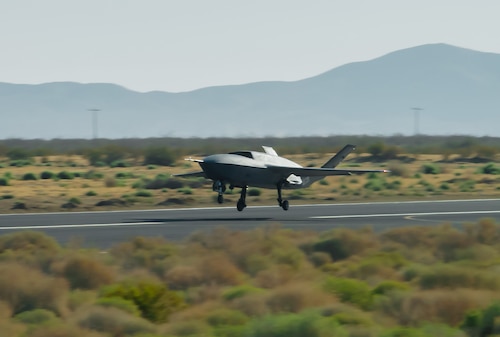In a major step toward a new era of airpower, the Department of the Air Force reached a key development milestone in its Collaborative Combat Aircraft (CCA) program, with one of its prototype platforms taking flight in less than two years from program launch - signaling a paradigm shift in the way the Air Force acquires new weapon systems.
The aircraft, designated YFQ-42A and developed in partnership with General Atomics, flew at a California test location, contributing valuable data to continued evaluations of platform airworthiness, flight autonomy and mission system integration. This supports the Department's broader initiative to field large quantities of modular, affordable, and operationally relevant uncrewed aircraft designed to fly alongside crewed fifth and sixth-generation aircraft.
"This milestone showcases what's possible when innovative acquisition meets motivated industry," said Secretary of the Air Force Troy Meink. "In record time, CCA went from concept to flight - proving we can deliver combat capability at speed when we clear barriers and align around the warfighter."
CCA is a key component of the Next Generation Air Dominance Family of Systems and reflects a new model for software-defined, modular airpower. The program is structured to leverage development from multiple vendor development solutions, reduce risk through competition, and integrate open-system architectures that allow the continuous iteration of autonomy and mission systems capabilities and delivery of enhanced capability at the speed of relevance.
"This is More Air Force in action," said Air Force Chief of Staff Gen. David Allvin. "We're not just moving fast - we're learning fast. CCA will help us rethink the battlespace, extend reach, flexibility and lethality in combat operations, and optimize warfighter performance through human-machine teaming."
To deliver CCA to the warfighter with unprecedented speed, the program is executing a multi-faceted learning campaign. This includes rigorous vendor-led developmental testing, independent evaluations at Edwards Air Force Base, California, and operational assessments by the Experimental Operations Unit at Nellis AFB, Nevada. This integrated approach ensures the force is prepared to seamlessly field and employ this capability-enhancing readiness and enabling rapid transition of combat power upon delivery of the first production aircraft.
The department previously selected Anduril Industries and General Atomics to develop production-representative prototypes under the CCA program. A competitive Increment 1 production decision is expected in fiscal year 2026.







